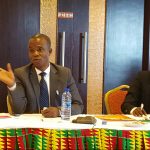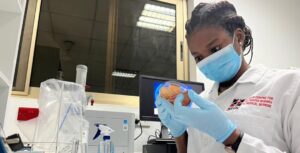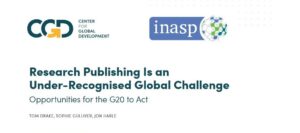Study assesses awareness and approach towards blood donation in Bangladesh
Blood donation is a vital life-saving process but low awareness about the importance of blood donation can impact the safe and adequate supply of blood in hospitals. A research article published in the Update Dental College Journal (UpDCJ) found a positive attitude to blood donation among the donors in Bangladesh but a big disparity between male and female, as well as some knowledge gaps about blood donation.
The study was conducted at the transfusion medicine department of National Institute of Neurosciences & Hospital in Dhaka from January to December 2015 to assess awareness, knowledge and practice of blood donation among donors.
The research article titled Awareness about blood donation among donors at a specialized tertiary level public hospital by Begum Sharifa Akhtar, Nihar Sultana, Saieda Farzana, Reshma Ahmed and Md Golam Rubby showed that age, gender, education level and marital status affected the blood donors’ willingness to donate.
Over 80% of the 150 donors participating in the research were male. As compared to males, this study finds female donors to be very few. The study identifies a low donor turnover and temporary deferral conditions like low haemoglobin values, low weight, and fear of pain as the reasons behind lower female participation in blood donation. The average age of the donors was 28.4 and the age range of the donors was 18-57 years.
The study shows that just over half (56%) of donors had knowledge about the eligibility criteria of blood donation such as knowledge about the interval of blood donation and the age they can start donation. However, 47.3 % did not know the required haemoglobin level to donate blood and the volume of blood in each donation, indicating that more awareness needs to be delivered to the target groups.
“[The] majority of the donors showed positive effects like a sense of satisfaction and were interested to donate blood regularly, which is a very positive approach. This study showed that most of the donors were aware about blood donation and they had a good attitude towards it,” says Nihar Sultana, author of this research article.
Sultana says that a clear, simple and consistent message should be delivered by using health education materials to the target groups for mass encouragement and awareness on this topic.
“Media can play an important role. Creating opportunities for blood donations by conducting many blood donation camps may provide a solution for our blood demand,” she adds.
The article Awareness about blood donation among donors at a specialized tertiary level public hospital appears in vol. 6 (2): 21-26 (2016) of Update Dental College Journal (UpDCJ). The article is made available online via Bangladesh Journals Online (BanglaJOL) platform, which is part of the Journals Online Project supported by INASP.
About the Journal
Update Dental College Journal (UpDCJ) is a double-blind peer-reviewed, biennial journal published by Update Dental College (UpDC). It publishes original articles based on laboratory work, field work, clinical trials and various other studies by scientific means related to disciplines of health and Biomedical science conducted in any Medical and Dental institutes in Bangladesh and other countries.
About BanglaJOL
BanglaJOL is a database of journals published in Bangladesh. It was initiated in June 2007 and officially launched in September 2007 with the support of INASP. The objective of BanglaJOL is to give greater visibility to the participating journals, and to the research they convey. It is managed locally by the Bangladesh Academy of Science (BAS). It provides open access to the full text of research articles published in 141 different journals from a wide range of academic disciplines and genres.
About INASP
Founded in 1992, INASP is an international development charity working with a global network of partners in Africa, Latin America and South Asia. In line with the vision of research and knowledge at the heart of development, INASP works to support individuals and institutions to produce, share and use research and knowledge, which can transform lives.
INASP’s approaches are based on the core pillars of capacity development, convening, influencing and working in partnership. INASP promotes equity by actively addressing the needs of both men and women across all our work and addressing issues of power within the research and knowledge system. INASP has projects in 28 countries, supporting all aspects of research and knowledge systems, from facilitating the provision of information to researchers to helping parliamentarians and civil servants to use research and evidence in policy making.
Disclaimer:
Research published in journals hosted on the BanglaJOL platform is selected by the journals in accordance with their own editorial processes and criteria. INASP and BanglaJOL provide hosting and guidance on good practices but are not involved in selection of research.
For further information
Thakur Amgai, Communications Consultant, INASP
Email: tamgai@inasp.info
Dr Sangita Shrestha, Communications Officer, INASP
Email: sshrestha@inasp.info

 Previous Post
Previous Post


